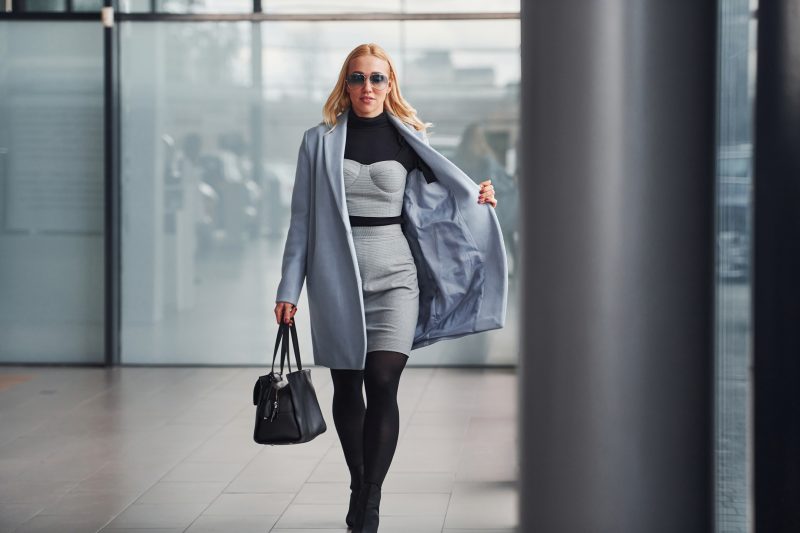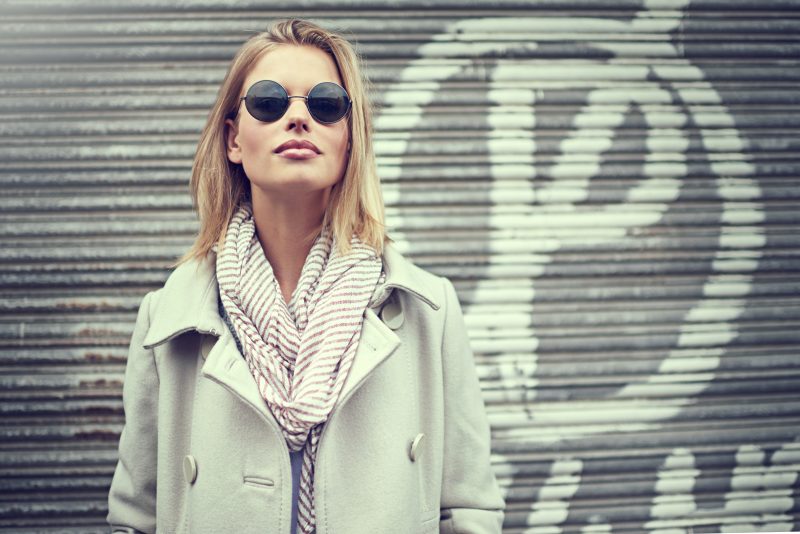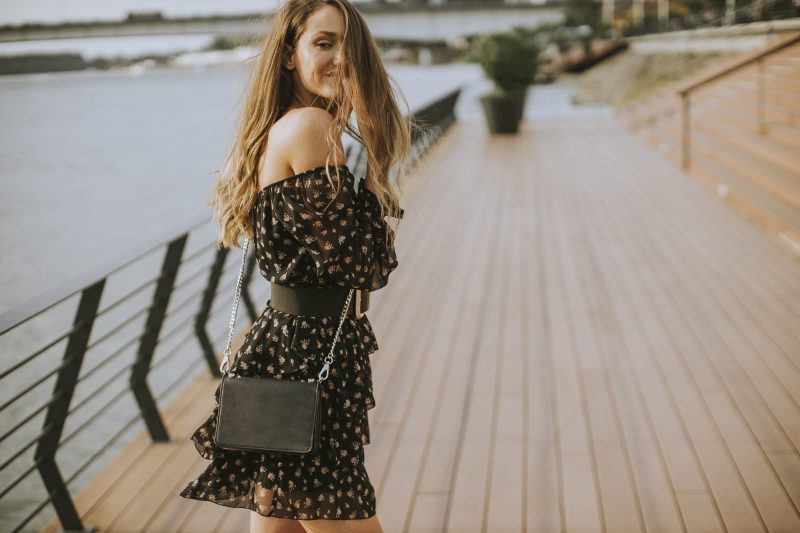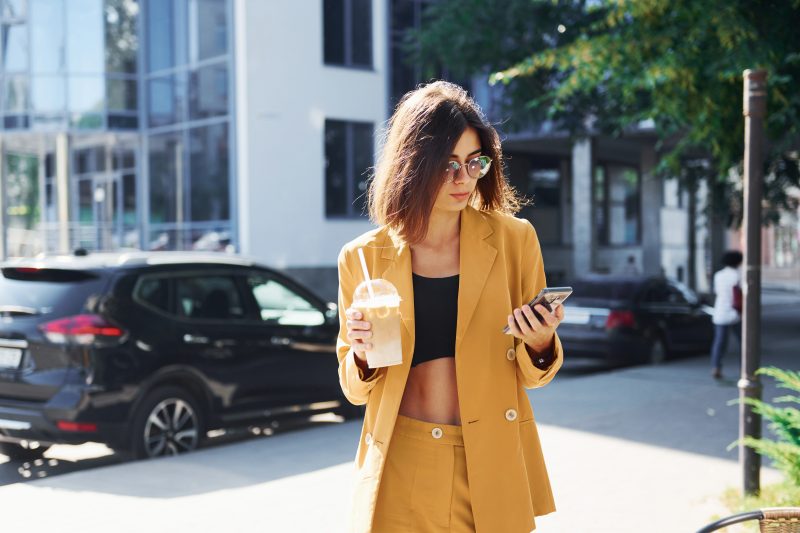My phone buzzed at exactly 7:14 AM last Tuesday with a text from my 19-year-old niece Zoe: “Are you more cottagecore or balletcore?” No “good morning,” no context, just fashion existentialism before I’d even had my coffee. I stared at it for a full minute, mentally cycling through my wardrobe and coming up blank on anything that seemed to fit either category. The last time I wore a tutu was for a Halloween costume in 2011, and while I own several throw pillows with vaguely floral patterns, I’ve never churned butter or raised chickens in my life.
“I’m coffeecore right now,” I texted back, which I thought was pretty clever for pre-caffeine. Zoe replied with the laugh-crying emoji, followed by: “That’s not a thing, but it should be. Sending links to explain.”
Three seconds later, my phone lit up with what appeared to be approximately 47 TikTok videos featuring impossibly young people in various themed outfits, all labeled with some version of “[something]core.” I watched them all while burning my toast and realized that once again, I was behind on a massive fashion shift that had been happening right under my nose.
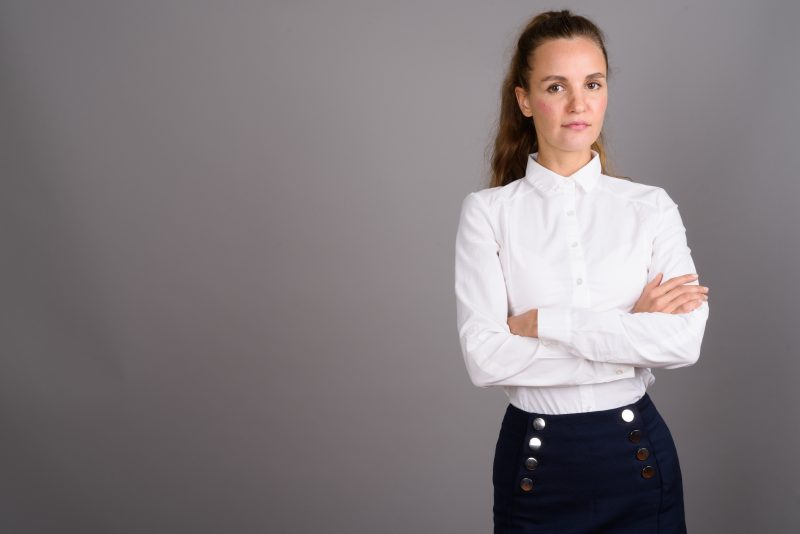
This happens more than I’d like to admit. For someone who literally gets paid to track fashion trends, I have an embarrassing tendency to miss entire aesthetic movements until they’re practically mainstream. In my defense, these “cores” multiply faster than rabbits on fertility medication. Back in my day (god, I sound ancient), we had like… five style tribes. Preppy, punk, bohemian, sporty, and whatever was happening at the Gap. Now there are apparently infinite ways to express your personal style, provided you slap “core” on the end of it.
Let me back up for those of you who, like me until very recently, might be core-confused. The whole thing started with normcore around 2014 – that deliberate embrace of the blandly average as a style statement. Think Jerry Seinfeld, but make it fashion. Then came cottagecore, which exploded during the pandemic when we were all fantasizing about escaping to a woodland cottage to make sourdough and forage for mushrooms instead of doom-scrolling through news alerts. Essentially, cottagecore is “what if I dressed like a character in a Studio Ghibli film who makes jam and talks to animals?”
From there, things escalated quickly. Dark academia (moody library vibes), light academia (slightly less moody library vibes), goblincore (embracing the feral and earthy), fairycore (ethereal woodland creature energy), and about seventeen thousand more variations, each with their highly specific visual codes and cultural references.
The algorithmic nature of social media has supercharged this trend fragmentation. TikTok doesn’t just show you what’s trending broadly – it shows you what it thinks YOU will like based on your personal algorithm. This creates these intensely specific micro-trends and aesthetic niches. So while I was watching videos about sustainable denim manufacturing (thrilling stuff, I know), my niece was diving headfirst into balletcore, which is apparently all about leg warmers, wrap sweaters, ballet flats, and a color palette that can only be described as “injured swan.”
After a week of intense research (read: ignoring actual work deadlines to fall down TikTok rabbitholes), I’ve compiled a cheat sheet of the cores currently dominating the internet’s fashion consciousness. Consider this your guide to understanding what the hell people under 25 are talking about when they describe their outfit.
Barbiecore is exactly what it sounds like – a hot pink explosion inspired by our plastic fantastic friend and turbocharged by the Margot Robbie film. Think vibrant pink everything, blonde hair, excessive accessorizing, and an almost aggressive level of femininity. It’s Legally Blonde meets Paris Hilton’s 2000s closet with a modern twist. The irony is not lost on me that the millennials who rejected Barbie as anti-feminist in the ’90s are now the ones dropping $500 on pink Valentino platforms in her honor. Character development, I guess?
Balletcore celebrates all things balletic, but without requiring actual dance skills (thank god). Ballet flats (they’re back with a vengeance, sorry to your arches), wrap sweaters, leg warmers, bodysuits, and lots of pale pink, white, and black. Think less “Black Swan psychodrama” and more “wealthy woman who takes barre classes three times a week.” I tried a balletcore-inspired outfit last weekend and my boyfriend asked if I was on my way to teach a Pilates class, so interpret that feedback as you will.
Then there’s coastal grandmother, popularized by TikToker Lex Nicoleta, which is essentially “what if Nancy Meyers directed your closet?” Linen pants, oversized button-downs, neutral cashmere, straw hats, and a permanent glass of white wine. It’s for people who aspire to own beachfront property in the Hamptons and have strong opinions about heirloom tomatoes. I accidentally dressed coastal grandmother for a work event recently and received three separate compliments, which tells me that perhaps I’ve found my core at last.
For those embracing the academic aesthetic, dark academia is all moody, autumnal vibes – think tweed, argyle, oxford shirts, pleated skirts, and looking like you might recite poetry in a graveyard. Its lighter counterpart, light academia, maintains the scholarly references but swaps the Gothic elements for a softer, more romantic approach – cream sweaters instead of black, pressed khakis instead of wool trousers. Both suggest you’ve read the classics, even if your Goodreads account is actually full of romance novels with shirtless men on the covers (no judgment, that’s literally my reading list).
Cottagecore refuses to die, evolving from its pandemic-era roots to include influences from actual historical periods. It’s less about looking like you might bake a pie and more about appearing as though you could be dropped into any BBC period drama without the costume department needing to make adjustments. Floral prints, puff sleeves, prairie dresses, and an inexplicable desire to own chickens despite living in a studio apartment.
If you’re thinking this all sounds exhausting, you’re not wrong. The speed at which these aesthetics rise and fall makes traditional trend forecasting look glacial by comparison. By the time Vogue is reporting on an aesthetic, TikTok has already declared it cheugy and moved on to something new. The half-life of a “core” appears to be approximately three months, give or take a viral video.
But here’s the thing – as much as I might roll my eyes at the seemingly endless proliferation of hyper-specific aesthetics, there’s something genuinely interesting happening here. These cores aren’t just about clothes; they’re about constructing entire lifestyle fantasies and finding community around shared visual references. They’re mood boards come to life, offering a blueprint for not just what to wear, but what music to listen to, what books to read, what films to watch, and even what activities to pursue.
When I was a teenager figuring out my style identity, I had magazines, movies, and whatever the cool girls at school were wearing. Today’s young people have infinitely fragmented, algorithm-driven inspiration sources that allow for much more specific self-expression. It’s not just “preppy” or “goth” anymore – it’s “dark academia with light cottagecore influences and a touch of 90s minimalism.” It’s both overwhelming and oddly liberating.
For those of us trying to incorporate these aesthetics into our wardrobes without looking like we’re in costume or trying too hard (the cardinal sin of fashion at any age), I’ve developed a few guidelines through trial, error, and several regrettable purchases:
First, identify which core genuinely resonates with your existing style and lifestyle. If you work in corporate finance, full cottagecore might raise some eyebrows, but you could incorporate elements through accessories or weekend wear. Be realistic about your life – balletcore is all fun and games until you’re running for the subway in ballet flats with zero arch support.
Second, start with one or two signature elements rather than diving headfirst into the full aesthetic. For Barbiecore, maybe it’s just a hot pink blazer worn with your usual neutral basics. For coastal grandmother, perhaps it’s high-quality linen pants paired with your regular rotation of tops. Small doses keep things from veering into costume territory.
The accessories are where you can really play without committing too hard. A balletcore ribbon in your hair, a dark academia plaid scarf, or coastal grandmother pearl earrings can reference the aesthetic without screaming “I’ve based my entire personality on a TikTok trend!”
Consider your existing wardrobe before making purchases. The most sustainable and budget-friendly approach is to shop your own closet first. You might already own pieces that work for certain cores – that forgotten cardigan could be perfect for light academia, while the linen shirt you only wear on vacation is peak coastal grandmother.
For the love of all things holy, don’t buy fast fashion versions of these trends. I know it’s tempting when a core catches your eye and you want to experiment without commitment, but those pieces will end up in a landfill faster than TikTok can come up with a new core. If you must try a trend, consider secondhand options or borrowing from friends. My group chat has an ongoing “core clothing swap” where we trade pieces as our aesthetic interests evolve, which is both economical and environmentally friendly.
The most important thing I’ve learned from my deep dive into core culture is that the best approach is to not take any of it too seriously. These aesthetic tribes are meant to be fun, not restrictive new rules to follow. Mix elements from different cores that speak to you, ignore the ones that don’t, and remember that personal style exists on a spectrum, not in rigid categorical boxes.
When I finally replied to my niece with my newly acquired core knowledge, suggesting I might be “coastal grandmother with dark academia tendencies for fall,” she seemed genuinely impressed. “That tracks,” she texted back, which I think is Gen Z for “I approve.” She then sent a mirror selfie of her outfit that somehow combined elements of balletcore, Y2K, and what appeared to be anime influences, with the caption “Trying something new today.”
That’s the beauty of this whole core phenomenon – it’s less about rigid rules and more about creative expression and finding your people. So whether you’re team Barbiecore or firmly in the coastal grandmother camp (or, like me, a chaotic mix of whatever happens to be clean that day), there’s room for everyone in this strange new landscape of hyper-specific aesthetics.
Just please, for the love of god, don’t ask me to explain what “weirdcore” is. There are limits to my research commitment, and that one looked genuinely disturbing.
“Corporate Baddie aesthetic day three,” the caption read, as she twirled in a perfectly tailored pinstripe suit paired with platform loafers and the kind of bold red lip that announces you have opinions and intend to share them. The video had over two million views.
By 2:45 AM, I had fallen down an algorithmic rabbit hole, watching dozens of similar videos tagged #corporatebaddie. My immediate impression was one of cognitive dissonance: these were unmistakably work clothes—the suits, the button-downs, the sensible-length skirts were all present—but they looked nothing like the joyless professionalism that dominated office style for decades. Something fundamentally different was happening, and I needed to understand it.
The next morning, sporting the kind of under-eye circles that no concealer fully addresses, I embarked on a journalistic deep dive into this emerging aesthetic. What is the Corporate Baddie, exactly? Where did it come from? And most intriguingly, how has it managed to make office dressing—historically the most creatively stifling corner of fashion—suddenly exciting?
“The Corporate Baddie is essentially what happens when Gen Z encounters traditional workplace dress codes and decides to reinvent them on their own terms,” explained Dr. Maya Rodriguez, professor of fashion sociology at Parsons, when I called her to help make sense of what I’d observed. “It’s office attire that acknowledges professional expectations while simultaneously asserting personal style and rejecting the neutrality that dominated corporate fashion for previous generations.”
This tension between compliance and subversion is at the heart of the aesthetic. Unlike the power dressing of the 1980s, which attempted to help women blend into male-dominated spaces through structured silhouettes and assertive colors, the Corporate Baddie isn’t trying to camouflage femininity or personality. Instead, it’s highlighting those elements while still technically adhering to most traditional office dress codes.
“Every generation reinterprets workplace attire to reflect their values,” Dr. Rodriguez continued. “For Gen Z, their primary values include authenticity, individuality, and a rejection of the work-life boundaries that previous generations accepted as normal. The Corporate Baddie aesthetic visually represents this worldview—these are clothes that acknowledge the professional environment without surrendering personal identity to it.”
The origins of this aesthetic can be traced to several converging cultural factors. First, there’s the timing: many Gen Z workers entered the professional world during or immediately after the pandemic, when remote work had already disrupted traditional office dress conventions. Having never experienced the full weight of pre-pandemic office culture, they returned to physical workplaces with fewer preconceived notions about appropriate attire.
“They missed the era when everyone just unquestioningly accepted that beige was a professional requirement,” noted Marcus Lee, a stylist who works with several young celebrities and influences, when I called him to discuss the trend. “There’s a genuine confusion about why anyone would voluntarily make themselves visually forgettable in a competitive environment. The Corporate Baddie is partly a rejection of the idea that success requires aesthetic self-erasure.”
The second factor is TikTok itself, which has accelerated the development and dissemination of micro-aesthetics beyond anything previous platforms could achieve. The algorithm-driven nature of the app means that once a user shows interest in a particular style category, they’re quickly immersed in endless variations and interpretations, creating rapid aesthetic evolution and community formation around specific looks.
“Traditional office wear evolved slowly because the feedback loop was limited to what you actually saw in your physical workspace,” explained social media analyst Jordan Kim when I interviewed her about the phenomenon. “The Corporate Baddie aesthetic evolved exponentially faster because participants can immediately see hundreds of interpretations, build on each other’s ideas, and receive instant validation for creative approaches. It’s office wear developed through collaborative digital creativity rather than top-down corporate policy.”
This collaborative development is evident in the distinct hallmarks that have emerged to define the aesthetic. Through observing hundreds of videos and speaking with self-identified Corporate Baddies, I’ve identified several key elements that distinguish this approach from traditional office attire:
Proportion play is perhaps the most immediately noticeable characteristic. While traditional office wear typically prioritized conventionally flattering proportions, the Corporate Baddie deliberately plays with scale—oversized blazers paired with micro-mini skirts, voluminous sleeves balanced with sleek bodysuits, wide-leg trousers with cropped tops under suit jackets. These unexpected proportions create visual interest while maintaining overall professional presentation.
Strategic skin reveals represent another significant departure from conventional office attire. Rather than the fully covered approach of traditional workplace fashion, the Corporate Baddie incorporates carefully calculated cutouts, strategic unbuttoning, subtle sheerness, or unexpected crop lengths. The key is selectivity—revealing one area while keeping others conventionally covered maintains the necessary professional balance.
Accessory maximalism serves as a central expression channel. While the clothing foundations often remain relatively classic (blazers, trousers, button-downs), accessories become the primary vehicles for personal expression—chunky loafers with platform soles, multiple ear piercings with miniature professional-themed charms, layered necklaces over button-downs, and bags that double as architectural statements.
Unexpected color combinations challenge the neutral palette that dominated traditional office environments. Instead of the expected navy/black/beige rotation, Corporate Baddies embrace unexpected color pairings—chocolate brown with electric blue, deep burgundy with bright orange, moss green with lavender. These combinations signal creativity while still using colors that individually read as sophisticated.
Beauty as power statement represents another significant shift. Rather than the minimal, unobtrusive makeup historically associated with professional environments, Corporate Baddies use beauty elements as intentional power signals—sharp graphic liner, bold lips, immaculately maintained nail art in lengths previously considered inappropriate for office environments, and hair styled for drama rather than conformity.
To better understand how these elements function in real workplace environments, I reached out to several self-identified Corporate Baddies who’ve gained significant followings documenting their work attire. Their experiences reveal both the appeal and the occasional challenges of this aesthetic approach.
“I started dressing this way partly out of economic necessity,” explained Zoe Park, a 24-year-old marketing coordinator with over 300,000 TikTok followers who watch her daily outfit documentation. “I couldn’t afford a complete ‘professional’ wardrobe when I started my job, so I had to get creative with styling pieces I already owned. I realized that by adding just a few traditional elements—a good blazer, proper trousers—I could transform my existing wardrobe into something that worked for the office while still feeling like me.”
This financial pragmatism appears repeatedly in conversations with Corporate Baddie adherents. Unlike previous generations who might have purchased separate wardrobes for work and personal life, this approach prioritizes versatility and creative restyling of existing pieces.
“The idea of buying clothes specifically for work that I’d never wear in my real life feels both financially and environmentally irresponsible,” noted Alex Chen, a 26-year-old paralegal whose corporate style videos routinely generate millions of views. “The Corporate Baddie aesthetic is partly about questioning why work and personal style ever needed to be completely separate categories.”
However, not all workplace environments respond equally well to this aesthetic innovation. The Corporate Baddies I interviewed reported varying levels of acceptance depending on industry, company culture, and location.
“I definitely calibrate based on what’s happening at work that day,” Zoe admitted. “Client meeting days get a more conservative interpretation, while internal-only days allow for more creative expression. I call it my sliding scale of baddie-ness.”
This strategic adaptation reveals another aspect of the aesthetic—it’s modular by design, allowing the wearer to dial elements up or down depending on specific professional contexts. This flexibility represents a sophisticated understanding of workplace politics rather than naive rebellion.
“I’m very aware of the boundaries,” Alex told me. “The goal isn’t to break dress codes—it’s to work within them while still maintaining personal style. Sometimes that means saving the platform loafers for days when I won’t see certain partners, or wearing the crop top with high-waisted pants that technically keep me covered. It’s about finding the technical compliance points while still expressing personality.”
This technical compliance paired with personal expression distinguishes the Corporate Baddie from previous generations’ approaches to office rebellion, which often involved small, sanctioned areas of personality expression (wild socks for men, statement jewelry for women) within otherwise conformist outfits. Instead, this aesthetic reimagines the entire approach to professional dressing while still acknowledging workplace realities.
“There’s a common misconception that Corporate Baddies are just young professionals who don’t understand office norms,” Dr. Rodriguez noted. “But my research suggests the opposite—they typically have a very nuanced understanding of those norms and are deliberately finding creative pathways within established expectations rather than simply ignoring them.”
This sophisticated negotiation of norms extends to how Corporate Baddies approach gender presentation in professional contexts. Unlike the rigid gender divisions that traditionally characterized office attire, this aesthetic incorporates significant gender fluidity in silhouettes, styling approaches, and specific garment choices.
“I regularly wear items from the men’s department as part of my Corporate Baddie looks,” explained Jamie Kim, a 25-year-old financial analyst whose workplace style videos have gained her over 450,000 followers. “Oversized men’s shirts, men’s trousers tailored to my measurements, traditional men’s loafers. But I’m styling them in ways that feel aligned with my gender expression rather than trying to directly mimic traditional menswear styling.”
This approach to gender in professional attire reflects broader Gen Z attitudes toward gender as a creative expression opportunity rather than a binary limitation. The Corporate Baddie aesthetic doesn’t reject gendered elements entirely, but rather treats them as an expansive style vocabulary available to all wearers regardless of personal gender identity.
This expansiveness extends to body diversity as well. Unlike many previous office wear trends that implicitly assumed a narrow range of acceptable body types, the Corporate Baddie community actively celebrates diverse body presentations in professional contexts.
“One of the most revolutionary aspects of this aesthetic is seeing it adapted for different body types on platforms like TikTok,” observed Katherine Wang, my editor-in-chief, when I shared my research with her. “Previous generations of office wear guidance was overwhelmingly focused on ‘flattering’ bodies according to conventional standards. The Corporate Baddie approach is more about visual interest and personal expression regardless of body type.”
This shift toward body-diverse professional presentation aligns with broader cultural movements toward body neutrality and rejection of conventional “flattering” guidelines. Corporate Baddies across size ranges prioritize silhouettes and styling approaches they personally find visually compelling rather than those traditionally deemed appropriate for specific body types in professional contexts.
The financial impact of this aesthetic evolution has been significant. Retailers previously associated with conventional office attire have struggled to adjust to these changing expectations, while brands that managed to anticipate or quickly adapt to the Corporate Baddie sensibility have seen substantial growth in their workwear categories.
“We’ve completely reimagined our office wear collections over the past two years,” admitted Gloria Martinez, design director for a contemporary clothing brand, when I interviewed her about adapting to changing workplace style expectations. “The demand for traditional suiting has plummeted, while items that bridge professional and personal style—oversized blazers, trousers with unexpected details, button-downs with architectural elements—have become our strongest sellers.”
This retail adaptation reflects the aesthetic’s fundamental rejection of the work/life separation that characterized previous generations’ approach to professional attire. Rather than creating products specifically for workplace contexts, successful brands are designing items with enough versatility and visual interest to function across contexts while still meeting basic professional requirements.
“Our most successful designs are ones that could plausibly be worn to a client meeting, a dinner date, or a gallery opening,” Gloria explained. “That versatility is key to the Corporate Baddie sensibility—these young professionals refuse to compartmentalize their identities through completely separate wardrobes for different life contexts.”
Some traditional workplace fashion authorities have criticized the aesthetic as unprofessional or inappropriate, arguing that certain elements—platform shoes, visible cutouts, bold makeup—undermine credibility in serious workplace environments. However, Corporate Baddies and their defenders point to changing workplace cultures and evolving understandings of professionalism that no longer equate neutrality with competence.
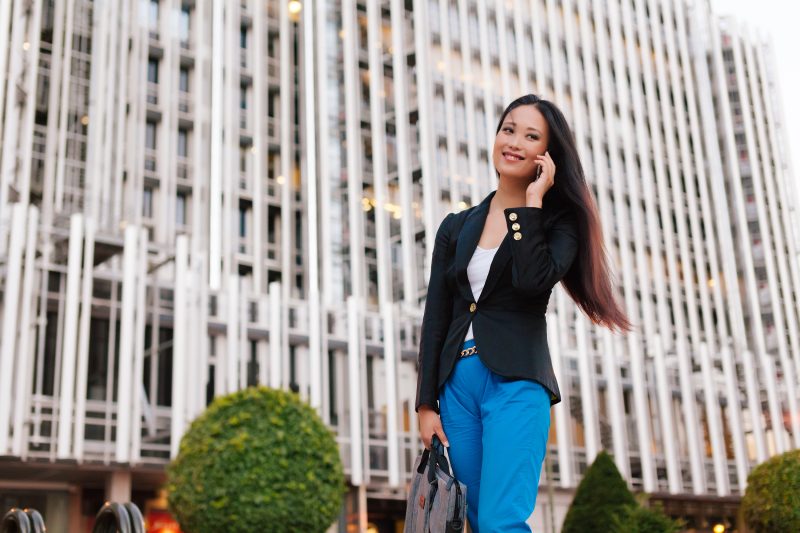
“The pushback mostly comes from people who benefited from the old system of visual workplace conformity,” Dr. Rodriguez observed. “Previous generations were told that success required looking interchangeable, and they internalized that message. They genuinely believe they’re helping younger workers by encouraging bland professionalism, not recognizing that workplace expectations have fundamentally shifted.”
This generational disconnect surfaces repeatedly in discussions about the aesthetic. Older workplace mentors often view Corporate Baddie styling as a naive career mistake rather than a deliberate navigation of evolving professional expectations.
“My first boss pulled me aside and genuinely tried to help me understand that my platform loafers were ‘too much’ for client meetings,” Jamie recounted. “I appreciated her concern, but what she didn’t realize was that three of our younger clients had actually complimented those exact shoes and seen them as evidence that our team understood current culture. The definition of ‘professional’ isn’t static—it changes with generational values.”
This evolution in the meaning of professional presentation reflects broader workplace culture shifts accelerated by the pandemic, remote work normalization, and changing attitudes toward work-life balance. As traditional workplace structures have become more flexible, the rigid dress codes that accompanied them have similarly evolved.
“There’s an increasing recognition that allowing greater personal expression in workplace attire correlates with higher employee satisfaction and retention,” noted workplace culture consultant David Zhang when I interviewed him about changing dress code expectations. “Companies competing for young talent are increasingly recognizing that rigid dress codes signal an overall inflexibility that makes them less attractive to potential employees.”
This connection between workplace attire freedom and overall workplace culture makes the Corporate Baddie more than just a fashion trend—it’s a visual manifestation of changing attitudes toward work itself and the role it plays in personal identity.
“When I dress as a Corporate Baddie, I’m communicating that I take my work seriously but don’t define myself exclusively through it,” Zoe explained. “My generation watched our parents sacrifice everything for jobs that ultimately didn’t reciprocate that loyalty. We’re approaching work differently, and our clothing reflects that—we’re bringing our whole selves to work rather than creating separate professional personas.”
This integration of personal and professional identity through clothing represents perhaps the most significant aspect of the aesthetic. The Corporate Baddie isn’t just making workplace clothing more visually interesting—it’s challenging the fundamental premise that professionalism requires a distinct, separate self presentation.
“Previous generations were told that credibility required visual conformity,” Dr. Rodriguez observed. “Gen Z is testing whether that was ever actually true or simply a control mechanism that limited authentic self-expression without actual professional benefit.”
Early evidence suggests this test may be succeeding. The Corporate Baddies I interviewed reported generally positive workplace experiences despite their departure from traditional office attire norms, with many noting that their distinctive personal style had become a professional asset rather than a liability.
“My style has actually become part of my professional brand,” Alex noted. “Clients remember me, colleagues seek my input on creative projects, and my distinct presentation communicates confidence in my skills and perspectives. Why would blending in through conventional office attire be better for my career than being memorably professional?”
For those intrigued by the Corporate Baddie aesthetic but unsure how to incorporate it into their own workplace wardrobes, the community offers surprisingly practical guidance. Unlike many fashion movements that require complete wardrobe overhauls, this approach emphasizes creative restyling and strategic additions to existing professional basics.
“Start with one traditional element—a good blazer, proper trousers, a classic button-down—and build your personal expression around that foundation,” Jamie advised.
“The Corporate Baddie isn’t about rejecting professionalism entirely; it’s about redefining how professionalism can look.”
This foundation-plus-personality formula creates a customizable template that can be adapted to various industry expectations, body types, gender presentations, and personal style preferences. The result is an approach to workplace attire that manages to be simultaneously more inclusive and more individually expressive than previous professional fashion paradigms.
“What makes this movement particularly significant is its adaptability,” Katherine observed when we discussed incorporating Corporate Baddie elements into our own workplace presentations. “You can take the aspects that work for your specific professional context and personal style without having to adopt a completely new aesthetic identity. It’s about questioning assumptions rather than creating new rigid rules.”
This questioning of assumptions extends beyond individual wardrobe choices to broader conversations about professionalism, workplace culture, and generational values. The Corporate Baddie aesthetic represents not just a style evolution but a visual argument for workplaces that value authentic personal expression alongside professional competence.
For my own part, I’ve found myself increasingly incorporating Corporate Baddie elements into my work wardrobe—platform loafers instead of traditional heels, oversized blazers with unexpected proportions, bolder makeup choices for important meetings. The response has been surprisingly positive, even from more traditionally minded colleagues who initially seemed skeptical.
“You look more confident,” Katherine noted after a recent client presentation where I’d worn a particularly Corporate Baddie-influenced outfit. “That matters more than adhering to outdated dress code expectations.”
And perhaps that’s the most compelling aspect of this aesthetic evolution—it recognizes that true professional confidence comes not from erasing personal identity but from integrating it thoughtfully into workplace contexts. The Corporate Baddie isn’t just making office clothes more exciting; it’s challenging us to reconsider whether professional success ever actually required sartorial self-erasure in the first place.
For a generation entering workplaces already transformed by technological, cultural, and pandemic-driven changes, this aesthetic represents not rebellion but innovation—a visual reminder that bringing your full self to work might actually be the most professional choice of all.
